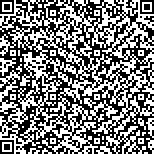| 摘要: |
| 在总结了目前海底底质分类研究的基础之上, 率先提出利用计算机数值模拟技术对海底底质进行分类识别研究。相较于目前海底底质分类研究中所使用的水槽实验法, 提出采用计算机数值正演技术模拟实际地震勘探中数据采集过程。在分类识别算法上, 分别采用支持向量机(SVM)和模糊C 均值聚类(FCM)算法对采集的数据进行分类, 为使支持向量机分类识别率达到最大, 引入差分进化算法对支持向量机中关键参数进行最优化搜索, 并研究了向原始地震记录中加入10%, 30%, 50%的高斯白噪音时算法的稳定性。在分析了这两种算法分类识别的正确率及其各自的优缺点后, 提出了海底底质分类识别的两步法, 即(1)先利用模糊C 均值聚类进行一粗糙的预测分类, 在每一类中挑选聚类性较好的数据作为支持向量机的训练样本; (2)将上一步中筛选的样本作为支持向量机的训练样本, 并用差分进化算法优化支持向量机分类参数, 再利用训练好的支持向量机对其余数据做预测分类。鉴于计算机数值模拟的可重复性、高效快速性及本文提出的模糊C 均值聚类-支持向量机方法的鲁棒性, 为便于开展进一步研究, 归纳总结了一套行之有效的采用计算机数值模拟技术开展海底底质分类识别研究的一般化流程。 |
| 关键词: 双相-随机介质 模糊C 均值聚类(FCM) 支持向量机(SVM) 差分进化算法 |
| DOI:10.11759/hykx20130402003 |
| 分类号: |
| 基金项目:国家自然科学基金项目(41104073); 江西省自然科学基金项目(2010GQS0002); 国家“863”计划课题(2012AA09A404); 国家海洋局海底科学重点实验室开放基金(KCSG0803) |
|
| Classification of seabed sediment using the fuzzy C mean clustering and support vector machine methods |
|
|
| Abstract: |
| Basis on the previous research about the classification of sediment, here, for the first time, we proposed the application of numerical simulation technology in classification of seabed sediment. Compared to the currently used flume method in the classification of sediment, we proposed the usage of computer technology to simulate the seismic acquisition process in practical exploration. In the classification and recognition algorithms, the support vector machine and fuzzy C mean clustering methods (FCM) were used to classify the data acquired. To maximize the accuracy of support vector machine (SVM), we introduced the evolutionary difference algorithm to optimize the values of the key parameters of support vector machine classification model. Then, to further study the stability of the methods, 10%, 30% and 50% of Gaussian white noise was added into the original data. After full analysis of the advantages and disadvantages of both approaches from its principle and classification accuracy, we designed a two-step classifier which combined the fuzzy C mean clustering and support vector machine. Firstly, the unsupervised classification algorithm, FCM, was used to classify the data preliminarily, and screened the samples with good clustering. Secondly, those selected data in step 1 were served as train samples of support vector machine model. The differential evolution algorithm was used to optimize the key parameters of support vector machine model, then the optimized support vector machine model was used to classify the remaining data. Finally, based on the repeatable, convenient characters of the computer simulation and the relevant high accuracy and the robustness of FCM-SVM, a total solution of a classification, which will be easier, deeper, further to study the feature of reflection from sediment is proposed in the article. |
| Key words: two-phase and random media fuzzy C means (FCM) support vector machine (SVM) evolutionary difference algorithm |
